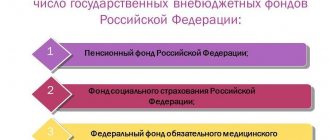The audit process and why it is needed
Inspections pursue understandable goals - control of reporting for the economically stable existence of the organization. The legality and reliability of the information provided by the accountant are the basis for the correct accounting of the company’s money. The audited company must comply with the following rules:
- provide reliable information on account balance 57;
- timely transfer income from the organization’s activities;
- correctly reflect the accounting of foreign exchange transactions.
The audit is based on a thorough study of all primary accounting registers that lead to the appearance of entries in the “Transfers in Transit” account.
Accounting characteristics
57 accounting account is a way of modern description of the process of transferring funds to bank accounts. Almost every trading organization transfers amounts from the cash register and proceeds for the reporting period to the account. The use of account 57 begins with such operations, which allows for more reliable and continuous accounting.
In addition to the funds transferred by the organization, transfers in transit include amounts sent from buyers on account of goods or services received, but which did not manage to be credited to the current account before the end of the reporting period. Funds allocated for currency conversion are also debited in account 57.
Basic information
The “in transit” status is used when there is a gap between the date of official confirmation of the write-off and the date of crediting the money to the company’s account. Let's look at examples:
- Revenue that is placed in the cash register for subsequent transfer to the company's account. Only those revenues that have not yet been credited are considered.
- Currency placed in the cash register for placement on the company's account. Only foreign money that has not yet been credited is considered.
The basis for accounting for money is primary. These could be receipts, accompanying statements, etc.
FOR YOUR INFORMATION! Banks may issue statements prepared in an unofficial form. They indicate the amount of money that has already arrived in the company’s account, but this has not yet been recorded in documentation. Such amounts must be recorded in accounting as “transfers in transit.” The company has no right to dispose of this money until settlement papers confirming payment are received.
Let's summarize. Transfers lasting more than a day are recorded on account 57. DT reflects the amounts of transfers that have not yet arrived at the company’s account. According to CT, transfers are written off, arising on the basis of crediting to the company's account.
Account application
Account 57, according to the order of the Minister of Finance of the Russian Federation, serves as a source of information about the movement of money in ruble and foreign currency equivalent. It is used in cases where the transfer of funds to a bank account is delayed for a period of 1 day or more from the moment of sending. In addition to the bank, the organization uses the services of savings banks and post offices for settlement transactions.
It is necessary to have a basis in the form of primary accounting documents. These are receipts from executive agencies, as well as accompanying statements for the delivery of proceeds to collectors and other accounting registers. The movement of foreign currency funds must be organized separately from other transfer operations.
Correspondence with other accounts
Account 57 is active, which means that any inflow of funds is recorded in debit, and write-off is recorded in credit. At the end of the reporting period, a debit balance is formed, or the account is closed if the funds in transit have managed to transfer to the main bank accounts. Based on the characteristics of the account, it is possible to distinguish between its correspondence in debit and credit with other accounts.
Account “Transfers in transit” is debited to the following accounts:
- monetary (accounts 50, 51 and 52, “Intra-economic settlements”);
- settlements with buyers and creditors (accounts 62, 64, 76);
- settlements with dependent organizations (account 78);
- sales of products (accounts 45 and 46);
- profit and loss (account 99).
Closing account 57 - loan correspondence - is most often performed from the account. 50, 51, 52 and 64, 73. Complete posting confirms the fact that funds have been credited to the destination account.
“Transfers on the way”: 57 accounting account – postings
- D 57.03 K 90.01.1 – reflects the amount of retail revenue paid for acquiring.
- D 51 K 57.03 – the crediting of money to the seller’s account is reflected.
- D 57.01 K 50 – on the last day of the month, the deposit of money from the cash register to the r/account is reflected.
- D 51, 52 K account 57.01 – the crediting of funds en route to the r/account is reflected.
- D 57.02 K 52, 51 – funds were transferred for the purchase of foreign currency.
- D 57.01 K 62, 76 – the transfer of a money transfer from the counterparty is reflected, but the funds have not yet been received into the r/account.
- D 51 K 57.01 – reflects the receipt of funds in the bank.
Conclusion - in this article we figured out what money transfers are; provided standard entries for account 57, and found out which organizations can operate without reflecting transit amounts.
Postings to account 57 when depositing money from the cash register
The transfer of money from the cash desk using the “Transfers in transit” account is carried out in the case when the duration of the operation will take more than 1 day. Amounts are deposited from the organization’s cash desk in the following cases:
- you need to top up your current account;
- to avoid exceeding the cash limit;
- you need to transfer money to your corporate card account.
Additionally, you can consider the situation when a transfer occurs from one current account of an organization to another.
Accounting entries are also prepared using account 57. Basic quotes for correspondence between accounts 50, 51 and 57
| Dt | CT | Amount, rub. | Characteristics of an accounting transaction |
| 57 | 50 | 20.000 | money in rubles was handed over from the cash register for transfer to a bank account |
| 51 | 57 | 20.000 | the transferred money was successfully credited to the bank account |
| 57 | 51.01 | 140.000 | the amount was transferred from current account A to current account B |
| 51.02 | 57 | 140.000 | funds were transferred from current account A (51.01) to current account B (51.02) |
| 57 | 50 | 85.000 | money is sent to a corporate card account |
| 55.01 | 57 | 85.000 | funds have been received into the organization’s corporate card account |
It is important not to forget to use account 57 when transferring amounts from the cash register to the bank account. It is possible that posting Dt 51 Kt 50 more simply describes the process of transferring the cash contents of the cash desk to a bank account, but this operation is not reliable. After all, funds are not credited at the same moment when they were sent. Only after the actual execution of the transaction is it possible to carry out such a quotation.
Typical accounting entries with account 57
In the Chart of Accounts you can find a number of standard entries used to reflect transactions using account 57. Here are the most common of them:
| Operation description | Dt. | Kt. |
| Payment for goods or services made using acquiring | 57 | 90 |
| Revenue from the sale of goods transferred using a corporate card | 57 | 62 |
| Proceeds that were transferred through collectors to the bank | 57 | 50 |
| Money received to the company's current account through payment by plastic card | 51 | 57 |
| Acquiring agreement commission | 60 | 57 |
| Money transferred from the company's bank account for the purchase of currency | 57 | 51 |
| The purchased currency was credited to the company's account | 52 | 57 |
Currency operations
Accounting for foreign currency funds is carried out on active account 55. Circulation is carried out both in rubles and in foreign equivalents in various payment forms, except for bills. Each of the payment forms involves opening a corresponding sub-account.
When converting currency, companies use account 57. Depending on the type of operation being carried out, sub-accounts are opened:
- 57.1 – currency for sale;
- 57.2 – currency for sale deposited by the bank;
- 57.3 – funds in rubles for the purchase of foreign currency.
It is worth noting that account 57.3 remains open until the organization purchases currency in the amount of transferred rubles.
Subaccount 52.2 reflects currency transactions that are carried out outside the Russian Federation on the accounts of foreign companies. It is debited when transfers are made by foreign firms in favor of the organization, as well as when bank interest is calculated for the use of funds. The account credit shows transactions related to:
- transfer of funds to the main bank account of the company;
- fee for servicing a foreign currency account;
- payment of expenses to employees of the organization;
- transfer of funds related to the maintenance of a foreign branch.
Payment of expenses to employees can be made from account 52.2 only with special permission from the Bank of the Russian Federation.
The exchange rate difference arising on account 57 is written off to the credit of subaccount 91 “Other income”. If it is negative in the reporting period, the account corresponds with the debit of subaccount 91 “Other expenses”. Postings are made only on the basis of an accounting certificate.
Synthetic and analytical accounting of transfers in transit
For accounting purposes of transfers in transit, active account 57 “Transfers in transit” is intended. The debit of this account reflects information about transferred but not yet credited funds and monetary documents.
In order to separate transactions on this account in foreign currency and separate accounting of funds by deposit method, the following subaccounts are provided for this account:
57/01 “Transfers in transit” - contains information about funds that were transferred for crediting, but have not yet been received into the account (the store’s revenue has been handed over to the collector).
57/02 “Purchase of foreign currency” - used when reflecting transactions with currency (purchase) in transit, as well as to reflect exchange rate differences on it.
57/03 “Sales by payment cards” - used when carrying out acquiring transactions (non-cash payment for goods by bank card, while the acquiring bank charges a percentage for transactions).
57/21 “Transfers in transit (in foreign currency)” - transactions involving the transfer of funds in foreign currency are reflected in this account while the funds are in transit.
57/22 “Sales of foreign currency” - used when reflecting transactions with currency (sale) in transit, as well as to reflect exchange rate differences on it.
If the need arises, the organization has the right to introduce additional subaccounts, indicating this in the accounting policy.
Due to the fact that transfers in transit are funds of the enterprise deposited in the bank, but not yet credited for their intended purpose, they are reflected in the balance sheet as an asset and are included in the item “Other funds”.
Postings for currency transactions
Currency transactions are an important component of monetary accounting and settlements.
To transfer funds in foreign equivalents, organizations use accounting account 57. The transactions common in the process of conducting transactions are considered in the table: Currency transfers in transit
| Dt | CT | Characteristics of an accounting transaction |
| 57.3 | 52 | currency transferred for conversion into rubles |
| 91 | 57.1 | The total from the sale of foreign currency was written off in rubles |
| 76 | 57.2 | after transferring funds to a foreign branch, the currency in rubles was written off from the account |
| 57 | 91.1 | positive difference in the exchange rate is recognized |
| 91.2 | 57 | a negative difference in the exchange rate is recognized |
Correct preparation of correspondence accounts will reduce the risk of errors in accounting registers and financial statements.
Using account 57 in foreign exchange transactions
If the operations of debiting rubles from an account, selling currency and crediting proceeds take more than one day, account 57 must be used.
Example of transactions when purchasing currency
Master LLC submitted an application to the bank to purchase currency and for these purposes transferred 600,000 rubles to it. The bank purchased currency on the stock exchange at a price of 60 rubles per dollar. The Central Bank exchange rate on this date was 58 rubles per dollar.
Postings
| Dt | CT | Operation description | Sum | Document |
| 57 | DS for currency purchases are listed | 600000 | Bank statement | |
| 57 | The purchased currency is credited to the account (10,000 USD * 58 rubles per USD) | 580000 | Bank statement | |
| 91 | 57 | The difference between the Central Bank rate and the acquisition rate is reflected ((60 rubles per USD -58 rubles per USD)*10000) | 20000 | Bank statement |
Example of an operation when selling currency
On October 1, Master LLC submitted an order to the bank to sell $1,000 on October 2. The Central Bank dollar exchange rate as of October 2 is 60 rubles/USD. On October 2, the bank sold the currency at the rate of 61 rubles/USD.
Postings:
| Dt | CT | Operation description | Sum | Document |
| 57 | The currency to be sold has been written off (at the Central Bank rate) | 60000 | Bank statement | |
| 57 | The sales amount is credited at the bank rate (1000 * 61 rubles/USD) | 61000 | Bank statement | |
| 57 | 91 | Other income reflected (exchange difference) | 1000 | Bank statement |
Acquiring operations
Acquiring is the process of paying for goods or services using a special card. Payment can be made either through online resources or during a regular purchase in a store. Payment cards are plastic cards of the VISA, MasterCard and other classes issued and serviced by the bank. The POS terminal serves as a means of communication between the service user and the banking organization.
The company using acquiring operations enters into an agreement with the bank. The latter is due a set percentage of the commission for the instant payment services provided. The transfer of revenue to the organization occurs only after receiving a fiscal receipt - slip. This is a document confirming a payment transaction using a payment card. One of its copies is transferred to the accounting department of the organization.
Reflection of acquiring in accounting
Profit from the sale of goods or provision of services through payment through a POS terminal is transferred to the company’s account only after a bank verification and deduction of commission.
To correctly reflect accounting transactions, use “Transfers in transit” - account 57. The transactions that occur in this case can be seen in the table:
Acquiring Accounting
| Dt | CT | Characteristics of an accounting transaction |
| 57 | 90.1 | Profit from sales paid by bank card is recognized |
| 90.3 | 68 | VAT is charged on the amount received |
| 51 | 57 | the amount of profit is credited to the organization’s bank account |
| 91.2 | 57 | reflects the company's expenses for acquiring services |
Depending on the method of accrual of income, its recognition will be carried out at different times. The accrual method implies the use of posting Dt 57 Kt 90.1, regardless of the period in which the funds were received, and considers the date of receipt of income as the date of sale. If the company uses the cash method, the amount is written off to income when the money from the sale is credited to account 51.
Payments with bank cards via the Internet
To accept payment from the buyer using plastic cards, the seller must be registered in the electronic payment system (Visa, MasterCard, etc.), have a personal code and an Internet acquiring agreement with the servicing bank. The acquiring bank transfers funds received as payments via bank cards to the account of the seller organization. Typically, the bank withholds a commission for acquiring transactions (clause 1 of Article 851 of the Civil Code of the Russian Federation) and then the seller organization receives into its account the buyers’ funds, reduced by the amount of the acquiring commission.
Based on this agreement, the bank transfers funds received as payments for goods sold (work, services) to the client organization's account. In this case, the bank may withhold a commission (clause 1 of Article 851 of the Civil Code of the Russian Federation).
From 07/01/2017, when paying with a plastic card, the seller organization is obliged to issue the buyer a cash receipt stamped using an online cash register.
Payments through the acquiring bank arrive at the organization's current account only the next day, so acquiring generates accounting entries using the account. 57 “Transfers in transit” (subaccount 57.03 “Sales by payment cards”). This is necessary to control the movement of payments and take into account the commission of the acquiring bank.
Postings:
- Dt 57.03 Kt 62.02 - prepayment for goods using a bank card is reflected - 1000 rubles (based on the payment register);
- Dt 51 Kt 57.03 - funds are credited to the bank account minus the commission of the acquiring bank - 900 rubles. (basis - bank statement);
- Dt 91.02 Kt 57.03 - reflects the cost of the acquiring commission withheld by the acquiring bank (based on a bank statement, bank tariffs).
An example of acquiring accounting at an enterprise
Let's consider the process of accounting for non-cash payment by bank card at a conditional enterprise X. The cashier at the end of the work shift generates a Z-report, which contains the following information: the amount of revenue from sales by bank transfer - 180,000 rubles. (of which VAT is RUB 27,457.63). The data is transmitted to the accountant who makes the following entries:
- Dt 57 Kt 90.1 – receipt of revenue from sales via bank cards is reflected – RUR 180,000.
- Dt 90.3 Kt 68 – VAT charged on sales – RUB 27,457.63.
- Dt 51 Kt 57 - money was received into the company’s account minus the commission - 177,300 rubles.
- Dt 91 Kt 57 – shows the commission for banking services provided 1.5% = 2700 rubles.
57 accounting account is one of the main cash accounts used by the enterprise to make payments in rubles and foreign currency.
Example of invoice registration 57
The store received cash revenue of 50 thousand rubles for the shift. At the end of the shift, the collectors arrived, with whom the store had an agreement for the provision of services with a commission of 0.5%. Part of the proceeds - 30 thousand rubles - was paid using acquiring (there is a service agreement with the bank at 0.2%). As a result, the accountant generated the following entries:
- Dt. 50 – Kt. 90.01 – 50,000 rubles – cash revenue was reflected in accounting on the basis of PKO.
- Dt. 57-02 – Kt. 50 - 50,000 rubles - money is transferred to collectors on the basis of the transfer sheet.
- Dt. 51 – Kt. 57-02 – 50,000 rubles – the proceeds were deposited into the current account. The client received a statement from the bank.
- Dt. 91.2 – Ct. 51 – 250 rubles – collection services, commission.
- Dt. 57 – Kt. 90 – 30,000 rubles – money received through acquiring.
- Dt. 51 – Kt. 57 – 30,000 rubles – crediting of acquiring proceeds.
- Dt. 91.2 – Ct. 51 – 60 rubles – bank commission for acquiring services.










